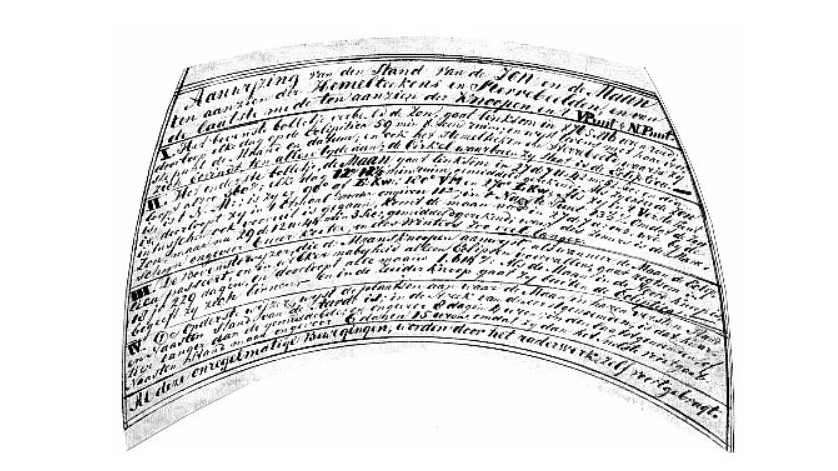
In this part, seven planets (Mercury through Uranus) can be seen revolving about the sun. The periods of their orbits match those of the celestial bodies to within 0.1% (see below for Botjes' table of the values he used). Their relative spacings are also to scale (with the exception of Uranus, which had its orbit truncated to fit on the dial), although the planets themselves are oversized in order to be visible. Saturn, seen here in the lower left, is set apart with a representation of its ring system. Likewise the slight tilt of each planet's orbit is represented to scale and oriented correctly. Finally, the varying distances of the planets from the sun through their orbits is represented by offset circles. (The tilt, orientation, and offset of each orbit is likewise described in Botjes' table).
Although Neptune was discovered in 1846, ten years before Botjes began construction, it is not included, probably because its orbital period was not yet well determined.
Months of the year are labelled around the rim, and the current date may be estimated by looking at which month is behind the earth as viewed from the sun.
The Zodiac

There are also two sets of symbols representing the constellations of the zodiac. The symbols are divided into twelve equal zones, as was done by ancient astronomers for the purpose of making astrological predictions, although the actual constellations vary in size. The outer set of symbols represents where the earth would have been in ancient times, while the inner set represents the current locations. The difference is due to the gradual precession of the earth's spin axis due to the gravitational action of the sun and moon (not unlike the precession of a child's top due to the gravity of the earth). In 2200 years the axis precesses one twelfth of the way around.
The offset shown is a little more than one twelfth. So while in ancient times the sun was at the first point in Aries on the vernal equinox (March 21), it is now in the constellation of Aquarius on that date. It is indicative that while the "Age of Aquarius" has indeed dawned, modern day horoscopes still associate the month beginning March 21 with Aries. That their authors are unconcerned that the sun is nowhere near Aries during that month is a tacit acknowledgement that there is no physical basis for astrology.







